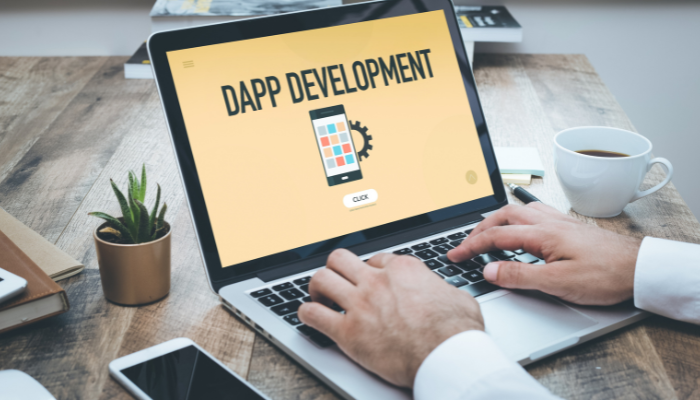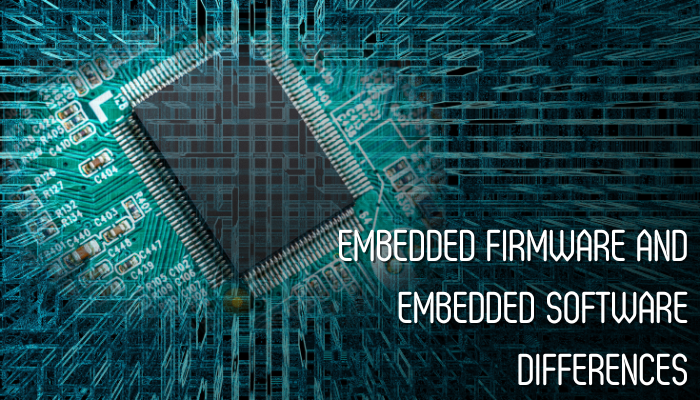“The future of applications is decentralized. Let’s build it together.”
Decentralized applications, or DApps, are revolutionizing the way we interact with technology. DApps have the potential to transform various industries, from finance to gaming and social media. By eliminating intermediaries and providing greater control to users, DApps offer a new paradigm for application development.
Ethereum, the trailblazer in smart contracts and decentralized applications (DApps), has paved the way for developers, offering a multitude of possibilities. The Ethereum Virtual Machine (EVM) provides a robust and reliable environment for creating groundbreaking, peer-to-peer applications.
While Decentralized Application development shares some similarities with traditional app development, unique nuances exist. Decentralized applications leverage Web3 technologies, eliminating the need for centralized servers. This offers enhanced security and immutability, making them a hot topic in crypto and blockchain.
So let’s cut to the chase.
If you are looking to offer your users a seamless, decentralized, and user-driven application experience without the middlemen?
DApps are the way forward!
What is a DApp ?
Decentralized Applications, or DApps, promise an exciting development in application technology: an application that runs on a decentralized network like a blockchain. Compared to conventional applications, DApps do not run on centralized servers. Instead, they depend on blockchain technology, allowing them to withstand censorship and tampering.
They are here to stay for the next generation of mobile applications. Instead of interacting with centralized servers, conventional apps talk straightforwardly with the blockchain. Hence, when a user uses a DApp, they are directly interacting with the blockchain.
The development of DApps requires a distinct technology stack compared to conventional applications. Solidity, a prominent coding language in DApp development, plays a crucial role. Many DApps leverage Smart Contracts, which are programmed in Solidity to define the rules and logic of their applications. Solidity’s built-in types and functions make it exceptionally convenient and efficient for programming Smart Contracts that interact seamlessly with the Ethereum blockchain.
Curious about the magic behind DApps? Let’s break down the Key characteristics that make them tick.
Key Features That Set DApps Apart
Decentralized Applications, or dApps, embody a modern paradigm of software engineering relying on blockchain technology for functioning under decentralized authority. The following are principal characteristics that highlight a dApp:
- Decentralization
DApps operate on a decentralized network, meaning they don’t rely on a single server or authority. This structure enhances security and reliability by eliminating a single point of failure, making them much harder to compromise.
- Open Source
Most dApps are open-source that can be inspected, modified, or contributed to any developer. Transparency is a great source in gaining community trust among the developers.
- Immutability
Once the data becomes recorded within the blockchain, it cannot be deleted. In other words, with immutability, transactions made in dApps cannot tamper with each other, thus ensuring a dependable fail-safe transaction record.
- Transparency
Being uniquely transparent, all the transactions using a dApp are boldly present on the blockchain. It offers a few methods for anyone to use in verifying the integrity of the system without trusting a central authority. This depends on the belief in decentralization systems.
- Cryptographic Security
Utilities of cryptography in a DApp protect user data as well as transactions, thus breaking the barriers of hacking and unauthorized access. Incredibly, this increases the marginal security of DApps when compared to the traditional applications.
- Peer-to-Peer Interaction
DApps allow users to communicate directly with each other without needing a middleware. This peer-to-peer model alone precludes the need for third parties hence reducing costs while upscaling transaction speed.
- Tokenization
Most of the applications now use tokens/cryptocurrency as one of the management actions in goods and services incentive models.
- Resistance to Censorship
The reason that dApps can be censorship-resistant is due to their décentralisation. Needless to say, no entity can truly have complete control over an application to shut it down, which also makes it difficult for external interests to intervene in their operation.
- Interoperability
DApps are designed for seamless aggregation with other apps and services on compatible platforms, enabling innovative ecosystems that leverage the strength of multiple dApps.
- Accessibility
The dApps can be accessed by anyone with an internet connection, democratizing service access and functionality to areas and groups.
Now that you know what makes DApps unique, let’s dive into the technology that powers them.
The Role of Blockchains and Smart Contracts in DApps
Blockchain
Let’s make it simpler for you to understand. Imagine a digital ledger recording transactions across a network of computers, that’s a blockchain. A blockchain has no central authority; hence, it is called decentralized. Transaction data are stored in blocks and linked in a chain, thus the name. Once a transaction is recorded onto the blockchain, it becomes practically impossible to edit and guarantees security and transparency.
Smart Contracts
Smart contracts can be considered self-executing agreements in which the terms have been explicitly written into computer code. They exist on the blockchain and execute automatically once predefined conditions are met. Unlike traditional contracts that depend on intermediaries and the legal system, intelligent contracts simplify processes and consequently limit the requirement for trust.
Blockchain and smart contracts are the basis of decentralized applications (DApps). They enable a secure, transparent, and automatic framework for transaction settlement that opens new opportunities for many industries.
Now that you get the basics, let’s talk about why DApps have everyone buzzing.
Why is DApp Development Essential?
DApp development is key for improved security, privacy, and uninterrupted access. With decentralization, it reduces costs and eliminates single points of failure. Let’s get into why DApp development is essential.
- Decentralization: DApps function on a decentralized level, thus removing the chance of a single point of failure, which provides for extra reliability and availability: they are less likely to crash or have downtime in comparison to centralized applications.
- Security: DApps utilize blockchain, thus imploring extra security through cryptographic encryption, which protects them against common types of cyber threats from things like hacking and DDoS attacks.
- User Privacy: DApps don’t require the users to supply personal information; users can anonymously interact with one another. This is a great boon when applied to finance and social media.
- Cost Efficiency: DApps can drastically minimize transaction costs by eliminating intermediaries and thus using smart contracts. Users typically incur smaller transaction costs than traditional applications.
- Transparency and Trust: DApps permit an open-source protocol for users to verify the code and transactions, thus ensuring participants of the mutual trust. The consensus mechanisms used in blockchain work toward verifying all the transactions by the entire network.
- Uninterrupted Access: DApps remain accessible any time, with no interruptions; this is because there is no risk of a centralized server becoming a problem together with maintenance or outages.
Disadvantages of DApps
While DApps offer significant advantages in terms of security, privacy, and cost efficiency, they also present challenges:
- Complexity of use: Users have to manage private keys rather than enjoying the ease of securing personal digital assets with simple usernames and passwords, creating a steep learning curve before they can use it.
- Slow Transaction Speeds: Many DApps suffer from slower transaction processing times due to the consensus mechanisms involved, which can limit their scalability and efficiency
- Complex Maintenance: It is rather crappy and almost impossible, once deployed, to change the code of certain aspects of the DApp. If bugs or vulnerabilities are discovered after launch, actual fixes may be nigh on impossible due to the immutable nature of a blockchain.
- Resource-hungry: The operation of DApps leads to the consumption of resources represented by a network; thus, if more than 500 tokens communicate, scalability becomes problematic as possibly causing network congestion.
- Limited User Adoption: Complicated user experiences and high technical barriers may all work against putting DApps into widespread usage and their real growth potential.
So, are DApps truly the future, or do their challenges hold them back? Let’s peek under the hood and see what makes a DApp run.
Core Components of a DApp
Decentralized applications (dApps) have several core components that create a functional and user-friendly experience. Here’s an overview of these components:
1. Smart Contracts
Smart Contracts are self-suited contracts in which the terms of the agreement are directly written into code. These contracts reside on the blockchain taking care of the app’s business logic and execution of operations as required, without the intervention of intermediaries. The key roles are:
- Automation: Smart contracts automate transactions and data validations, eliminating human error.
- Transparency: These are transparent to the parties and incredibly secure beyond the reach of intermediaries.
- Security: After being launched on a blockchain protocol, the contract just cannot be amended, except under extraordinary circumstances. Thus, there are huge benefits to using smart contracts when code is trusted.
2. Frontend/User Interface
The front is the user-facing part of a dApp, typically built using standard web technologies like HTML, CSS, and JavaScript frameworks such as React. It serves several functions:
- User Interaction: Provides an interface for users to interact with the app, such as submitting forms or executing transactions.
- Integration with Smart Contracts: The front communicates with intelligent contracts through libraries like Web3.js or Ethers.js, allowing users to send transactions and receive data from the blockchain.
- Wallet Connection: Users connect their cryptocurrency wallets (e.g., MetaMask) to interact with the dApp securely.
3. Backend Infrastructure
While many apps rely heavily on intelligent contracts for backend functionality, some may incorporate additional backend services to handle tasks unsuitable for the blockchain. This can include:
- off-chain data storage: This is the storage of data that does not need to be on-chain for efficiency and cost-effectiveness.
- API Integration: Connecting with external APIs for enhanced functionality, such as retrieving real-time data or processing complex computations.
4. Data Storage: On-chain vs Off-chain Solutions
Data storage in dApps can be categorized into two types:
- On-chain Storage, which stores Data directly on the blockchain. This ensures high security and immutability but can be costly due to transaction fees and limited storage capacity.
- Off-chain Storage: Data is stored outside the blockchain (e.g., in traditional databases or decentralized storage solutions like IPFS). This approach is often used for large datasets or non-critical information to reduce costs and improve performance.
Understanding these core components is essential for developing effective dApps. Each element plays a crucial role in ensuring that a dApp operates smoothly while leveraging the benefits of decentralization, such as enhanced security, transparency, and user control.
Blueprint for Building Your DApp Effectively
Developing a decentralized application (DApp) on the blockchain is a journey that requires strategic planning, precise coding, thorough testing, and careful deployment. Each step in the process plays a critical role in creating a secure, user-friendly, and scalable DApp. Below, we’ll explore the steps in detail, providing a roadmap to successful blockchain DApp development and including popular frameworks and best practices for testing and deployment.
Define the Purpose
- Identify the Problem: The first step in any blockchain DApp development process is pinpointing the problem you want to solve. For example, your DApp could aim to improve transparency in supply chain management, facilitate peer-to-peer lending without intermediaries, or create a decentralized social network. Clearly defining the problem helps ensure your solution remains focused and relevant.
- Understand the Target Audience: Knowing your audience is crucial for developing a successful DApp. Are you building for developers, businesses, or the general public? Understanding their technical proficiency and needs will guide design choices, feature prioritization, and user experience strategies. For example, a tech-savvy audience may appreciate advanced features, while a broader audience might value a more straightforward, user-friendly interface.
Requirements Gathering and Planning
- Gather Detailed Requirements: Collaborate with stakeholders, whether potential users, investors, or team members, to identify essential features. This ensures that the app’s functionality aligns with market needs. For example, in decentralized finance (DeFi) DApp, you may need specific features like yield farming, staking, or token swaps.
- Platform Analysis: Not all blockchains are created equal. Platforms like Ethereum are popular due to their mature ecosystem, while others like Binance Smart Chain or Solana offer advantages like lower transaction costs and faster processing. Analyze scalability, community support, security, and transaction fees to choose the best platform for your DApp.
- Popular Frameworks: During this phase, use development frameworks like Truffle, Hardhat, and Remix. These tools help developers easily create, compile, test, and deploy smart contracts, making the blockchain DApp development process more efficient and standardized.
Design the Architecture
- Innovative Contract Development: At the core of your DApp lies smart contracts—self-executing codes that handle transactions and enforce rules. Use Solidity for Ethereum or another suitable language, depending on your chosen blockchain. Focus on writing clean, efficient, and secure code since smart contracts are immutable once deployed. For example, if you’re building a DApp that manages digital assets, your smart contract will need functions to transfer ownership and record transactions.
- User Interface (UI) Design: Your DApp’s design should offer a seamless user experience. Create low-fidelity wireframes to map the user flow and high-fidelity prototypes to visualize the final look. The UI should be intuitive, mainly if your target audience includes users unfamiliar with blockchain concepts. Tools like Figma can help design prototypes that provide a straightforward user journey.
Development
- Front-End Development: Use frameworks like React or Angular to build a responsive, engaging front end that users interact with. This is where your users will engage with the blockchain, so ensure it is intuitive. For example, a simple user interface for a DeFi app might show account balances, transaction history, and options for interacting with smart contracts.
- Back-End Integration: Due to storage costs and speed, not all data can be stored on the blockchain. A back-end system may be necessary to handle more complex data or off-chain interactions. Use decentralized oracles like Chainlink to pull real-world data (e.g., stock prices, weather information) into your DApp when required. This is particularly useful for applications like insurance DApps that need external data inputs.
- Testing and Deployment: As you develop, focus on testing the different components to ensure your DApp operates flawlessly across all functions.
Testing and Deployment
- Thorough Testing: Testing is essential in blockchain DApp development to ensure functionality and security. Blockchain transactions are irreversible, so any bug in the code could result in significant losses. A well-tested DApp builds user trust and reduces the risk of costly errors.
- Testing Methodologies: Use unit and integration testing with tools like Truffle and Hardhat. These tests validate the logic of smart contracts and the interactions between various components, ensuring they work seamlessly together.
- Deploying to Testnet: Before launching on the main net, use tenets like Ropsten or Rinkeby. This allows you to simulate real-world usage scenarios without risking actual funds, providing a safe space for debugging and refining your DApp.
- Security Audits: Security is paramount in blockchain DApp development. Conduct third-party security audits using services like OpenZeppelin Defender or MythX to ensure your smart contracts do not have vulnerabilities. This step is crucial for building trust with users and investors, as a single exploit can cause irreversible damage.
Deployment
- Deploy Smart Contracts: Once testing is complete, use deployment tools like Truffle or Remix to deploy your smart contracts on your chosen blockchain mainnet. Ensure gas optimizations are in place to minimize transaction costs during deployment.
- Launch the DApp: After deploying the contracts, make your DApp accessible to users by hosting the front end on a decentralized storage solution like IPFS or a traditional cloud service. Ensure it’s easy to find through decentralized app marketplaces or your website.
Post-Launch Activities
- Monitor Performance and Feedback: After launch, actively monitor your app’s performance using blockchain analytics tools to track user interactions and transaction volumes. Regularly collect user feedback to understand pain points and areas for improvement.
- Iterate and Improve: Update your DApp based on user feedback and performance metrics. Since the smart contract logic is immutable, focus on improving the front end or adding new functionalities through upgradable contract patterns or sidechains. Iterating helps keep your DApp competitive and responsive to user needs.
Monetization Strategies
- In-App Advertising: Consider integrating decentralized ad networks to monetize your DApp without compromising user privacy. This can provide a revenue stream while keeping user data secure.
- Token Sales or Crowdsales: If applicable, consider launching an Initial Coin Offering (ICO) or a token sale to raise funds. This approach allows you to engage users from the start, incentivize early adopters, and create a community around your DApp.
Check out how Codewave created an online peer-to-peer lending platform for a Fintech startup Finzy.
Get in touch with our developers and experts right away to build your DApp with a high-performing, and secure tech stack.
With your DApp’s foundation in place, it’s time to focus on the top Platforms for Building DApps.
Top Platforms for Building DApps
Decentralized applications (DApps) are transforming the digital landscape by offering transparency, security, and control. Built on various blockchain platforms, each has unique strengths that cater to different needs. Here’s a look at the leading platforms shaping the DApp ecosystem:
1. Ethereum
Ethereum was the pioneer in DApp development. It introduced smart contracts and remains the most widely used platform for decentralized applications.
Key Features:
- Extensive developer community and rich documentation.
- A robust ecosystem with over 3,500 existing DApps.
- Strong support for decentralized finance (DeFi) and non-fungible tokens (NFTs).
- Best For Developers looking to build diverse applications, from financial services to gaming and digital collectibles.
2. Binance Smart Chain (BSC)
Known for its high transaction capacity and low fees, BSC is a popular alternative that is compatible with Ethereum assets and DApps.
Key Features:
- Faster transaction times compared to Ethereum.
- Lower gas fees, attracting cost-sensitive users and developers.
- Best For DeFi projects and applications that require quick transactions with minimal costs.
3. Solana
Renowned for its lightning-fast transaction speeds, Solana supports a growing ecosystem of high-performance DApps.
Key Features:
- An efficient consensus mechanism, processing thousands of transactions per second.
- Ultra-low transaction costs, improving user experience.
- Best For Projects requiring rapid transactions, such as gaming platforms, DeFi protocols, and real-time applications.
4. Cardano
Cardano is built with a research-driven approach, prioritizing security, scalability, and sustainability.
Key Features:
- Formal verification for smart contracts, offering greater reliability.
- Focus on interoperability with other blockchains and sustainability.
- Best For: Institutional developers and projects emphasizing security, academic rigor, and long-term scalability.
5. TRON
TRON aims to decentralize content sharing and entertainment through its blockchain, making it a strong contender for media-related DApps.
Key Features:
- High throughput and low transaction fees.
- Intelligent contract capabilities are similar to Ethereum’s but with a unique governance model.
- Best For Developers focused on creating content-sharing platforms, streaming services, or social media applications.
6. EOS
EOS is designed for scalability and ease of use, aiming to simplify the DApp development process.
Key Features:
- Delegated proof-of-stake (DPoS) mechanism for faster transactions.
- Zero transaction fees for users, as costs are managed through resource allocation.
- Best For: Large-scale applications that need high performance without passing transaction fees onto users.
7. Klaytn
A blockchain platform tailored for enterprise-level DApps, Klaytn emphasizes user experience and usability.
Key Features:
- Combines features of public and private blockchains for flexibility.
- Strong enterprise partnerships, especially in Asia, enhance adoption.
- Best For Businesses looking to integrate blockchain seamlessly into their existing systems and to improve user interaction.
Selecting the best platform for your decentralized application is crucial, as it influences everything from transaction speeds to user costs. With these top platforms in mind, you’re better equipped to navigate the dynamic landscape of DApp development. But once you’ve chosen your platform, the next critical step is building effective and secure smart contracts.
Crafting Effective Smart Contracts
Smart contracts are a fundamental component of decentralized applications (dApps), enabling automated execution of agreements on blockchain technology. Here’s a detailed overview of their importance, introduction to Solidity, security considerations, and efficiency in coding.
1. Importance of Smart Contracts
Smart contracts revolutionize traditional business processes by automating and securing transactions without intermediaries. Key benefits include:
- Automation: They execute automatically when predefined conditions are met, reducing the need for manual intervention and speeding up processes.
- Cost Reduction: By eliminating intermediaries, intelligent contracts lower transaction costs and minimize administrative overhead
- Trust and Transparency: All parties involved have access to the same data, fostering trust as transactions are recorded on an immutable ledger
- Security: Built on blockchain technology, smart contracts are secure against tampering and fraud. The decentralized nature of blockchain ensures that no single entity can alter the contract once deployed.
- Real-Time Execution: Transactions occur almost instantaneously, which is particularly beneficial in industries like finance and supply chain management
2. Solidity
Solidity is the primary programming language for writing smart contracts on the Ethereum blockchain. Understanding its features is crucial for practical, innovative contract development.
- Syntax and Structure: Solidity has a syntax similar to JavaScript, making it accessible for developers familiar with web technologies. It allows developers to define complex data structures and functions efficiently.
- Contract-Oriented Programming: In Solidity, everything is built around contracts, encapsulating data and functions. This paradigm supports the creation of modular and reusable code.
- Development Tools: Developers can use various tools such as Remix (an online IDE), Truffle (a development framework), and Ganache (a personal blockchain) to streamline the coding process
3. Security Considerations
While intelligent contracts provide numerous advantages, they also present unique security challenges that must be addressed:
- Code Vulnerabilities: Bugs or oversights in the code can lead to significant vulnerabilities. Common issues include reentrancy attacks, integer overflow/underflow, and improper access control.
- Testing and Auditing: Rigorous testing is essential before deployment. Developers should conduct unit tests and integration tests and engage third-party audits to identify potential security flaws.
- Upgradability: Once deployed, smart contracts cannot be altered. Implementing upgradeable patterns (like proxy contracts) can help address future changes or vulnerabilities without losing existing data.
- Gas Limitations: Transactions on Ethereum incur gas fees based on computational complexity. Developers should optimize their code to minimize gas consumption while ensuring functionality.
4. Efficiency in Coding
Efficiency in coding smart contracts is vital for performance and cost-effectiveness.
- Modular Design: Writing modular code allows for better organization and reuse of components across different contracts. This reduces redundancy and simplifies updates.
- Optimization Techniques: Developers should employ optimization techniques such as minimizing storage use (which is costly), using fixed-size types where possible, and avoiding unnecessary computations within transactions
- Clear Documentation: Comprehensive documentation helps maintain clarity about contract functionality, making it easier for other developers to understand or modify the code in the future.
- Use of Libraries: Leveraging established libraries like OpenZeppelin can save time by providing tested implementations of common functionalities such as token standards or access control mechanisms.
By focusing on these aspects, developers can create robust smart contracts that enhance the functionality of dApps while ensuring security and user trust.
A secure DApp protects not only its code but also user data and transactions, building trust within the community. The next step is ensuring that your decentralized application (DApp) is fortified against potential threats.
Top Security Measures for DApps
Ensuring the security of decentralized applications (DApps) is crucial to safeguard user data and funds. Here are three essential security measures to implement during DApp development:
1. Enhanced Data Security
- Encryption: Employ robust encryption methods, such as Advanced Encryption Standard (AES), to secure user data at rest and in transit. This prevents unauthorized access and data breaches.
- Access Control: Use robust authentication mechanisms, such as multi-factor authentication (MFA), to ensure that only authorized users access sensitive functionalities within the DApp.
- Data Validation: Regularly validate and sanitize user inputs to prevent injection attacks, such as SQL injection or cross-site scripting (XSS). This minimizes vulnerabilities that attackers could exploit.
2. Regular Audits and Code Reviews
- Smart Contract Audits: Engage third-party experts for comprehensive audits of smart contracts to identify vulnerabilities before deployment. This process should involve both manual reviews and automated testing tools.
- Continuous Monitoring: After deploying the DApp, regularly monitor any unusual activity or potential vulnerabilities. This includes tracking transaction patterns that might indicate a security breach.
- Code Reviews: Conduct peer code reviews within the development team to identify potential issues early on. This collaborative approach enhances code quality and promotes shared knowledge among developers.
3. Secure Development Practices
- Development Frameworks: Leverage well-established frameworks and libraries that have been tested for security flaws. Tools like Truffle and Hardhat can facilitate secure, innovative contract development.
- Testing Environments: Set up a staging environment that closely mimics the production setup. This will allow rigorous testing of the app’s functionalities and security measures before public release.
- Bug Bounty Programs: Consider running a bug bounty program to incentivize external developers to identify vulnerabilities. This will encourage community involvement and provide an extra layer of security through external feedback.
By prioritizing these security measures, DApp developers can create a safer, more reliable user experience and ensure the long-term success and trustworthiness of their applications.
Now that we already know everything about DApps. Let’s see how DApps differ from Centralised apps.
Centralized Vs. Decentralized Apps
| Centralized Apps | Decentralized Apps |
| A single organization controls the app, including its data and functionality. This central authority can modify or remove content at will | No single entity has control; instead, users collectively manage the app through a distributed network. This structure enhances transparency and reduces censorship risks |
| Vulnerable to cyber-attacks since they store data on a single server, creating a single point of failure | More secure due to data being distributed across multiple nodes, making it harder for attackers to compromise the entire system |
| Easier to scale initially but can become overwhelmed as user demand increases, leading to potential crashes | Designed for scalability by distributing the load across many nodes, which can better accommodate growing user bases |
| Limited transparency as the controlling entity restricts access to data and operational processes | Highly transparent; users can view the source code and understand how the app operates, fostering trust among users |
| Examples: Facebook, Netflix, Paypal, Spotify. | Examples: Compound, Uniswap, Audius, Brave Browser, |
Now let’s take some inspiration from what the industry is already building.
Popular DeFi and DApps You Should Know About
Here’s a list of some of the most well-known decentralized applications (DApps) that have made significant impacts in various sectors:
1. Axie Infinity
- Category: Gaming
- Description: A play-to-earn game where players collect, breed, and battle creatures called Axies. It gained massive popularity, generating over $1 billion in revenue in 2021. The game operates on the Ethereum blockchain and has a vibrant ecosystem with its native token, AXS.
2. Uniswap
- Category: Decentralized Exchange (DeFi)
- Description: A leading DEX that allows users to trade cryptocurrencies directly from their wallets without intermediaries. Uniswap uses an automated market maker (AMM) model and supports all ERC-20 tokens, making it a cornerstone of the DeFi ecosystem.
3. PancakeSwap
- Category: Decentralized Exchange (DeFi)
Description: Built on the Balance Smart Chain, PancakeSwap offers similar functionalities to Uniswap but with lower fees and faster transactions. It has become the most widely used DApp regarding total value locked (TVL).
4. Compound
- Category: Lending and Borrowing (DeFi)
Description: A protocol that allows users to lend and borrow cryptocurrencies in a decentralized manner. Users earn interest on deposits, while borrowers can take out loans against their crypto assets.
5. MakerDAO
- Category: Stablecoin
Description: Known for its stablecoin DAI, which is pegged to the US dollar. MakerDAO allows users to create DAI by locking up collateral in smart contracts, providing a decentralized way to maintain stability in volatile markets.
6. Aave
- Category: Lending and Borrowing (DeFi)
Description: A decentralized lending protocol lets users earn interest on deposits and borrow assets. Aave introduced innovative features like flash loans, enabling users to borrow funds without collateral for a concise duration.
7. Minds
- Category: Social Media
Description: A decentralized social media platform that encrypts user data and rewards content creators with cryptocurrency for their contributions.
8. Audius
- Category: Music Streaming
- Description: A decentralized music streaming platform that allows artists to share their music directly with fans while retaining control over their content and earnings through social tokens.
These DApps represent a wide range of use cases across gaming, finance, social media, and more, showcasing the versatility and potential of decentralized technologies in transforming traditional industries.
Also read: Building DeFi Apps
Wrapping it up!!
With the rapid growth and innovation in the world of blockchain, it’s clear that DApps are here to redefine how we interact with digital services. While new challenges will inevitably arise, so too will exciting opportunities for those ready to adapt and innovate in the DApp space.
In this blog, we’ve aimed to provide a comprehensive overview of the DApp ecosystem, covering everything from the most popular DApp platforms and key trends to security practices and the essential tools for building effective decentralized applications. We hope you found it insightful—feel free to share this knowledge with your network!
If you’re looking to bring your DApp vision to life, Codewave is the perfect partner for your journey! With over 300+ digital transformation projects completed across 10+ industries, Codewave is here to help you build powerful, secure, and user-friendly DApps that meet the demands of today’s digital landscape. Let’s shape the future together!
Check out our portfolio to know more.
Get in touch with our developers and experts right away to build your DApp with a high-performing, and secure tech stack.
Codewave is a UX first design thinking & digital transformation services company, designing & engineering innovative mobile apps, cloud, & edge solutions.







